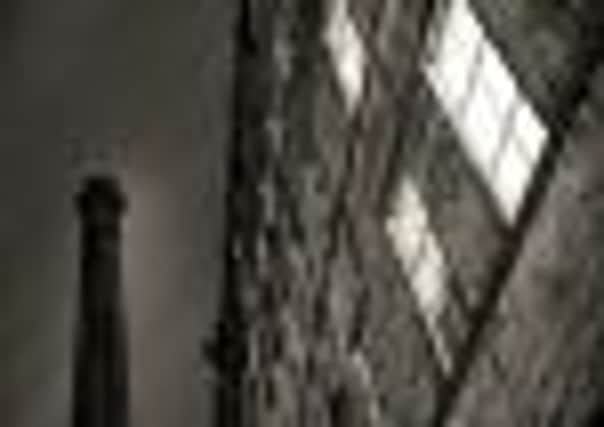New light on heritage as night falls on the mills


FROM Iceland’s southern coastline and the remote western fjords, to the island of Hokkaido in Japan, Mark Voce has photographed the natural world in stark, bewitching detail.
He focuses on the relationship between land and water to create almost dreamlike photographs that are both personal and epic. But for his latest exhibition, at Dean Clough in Halifax, he has swapped the natural environment for a man-made one.
Advertisement
Hide AdAdvertisement
Hide AdFor the past two-and-a-half years Voce has been researching and photographing some of West Yorkshire’s historic textile mills and 25 of the subsequent prints make up his latest exhibition – Shadows of Industry. Salts Mill and Dean Clough mills were the first locations he chose before moving on to others including Sugden’s Mill in Brighouse, and the now-demolished Gannex Mill in Elland.
For the Halifax-born photographer, known for his coastal portraits rather than those of bricks and mortar, it has been an interesting artistic journey. “My photography has been based around the coastal environment and nature and more picturesque landscapes rather than the textile mills of Yorkshire.
“I’ve travelled all over the world – top places like Iceland and Japan to photograph the landscape, but sometimes you can find great locations by just going down the road and exploring your surroundings,” he explains.
What led to his switch in emphasis was, in part, down to the weather. “I was trying to find something to photograph during the winter because it was becoming more difficult to make trips to the coast, and growing up in Yorkshire I’d always been interested in the old industrial mills and I didn’t think they were being photographed much at night, or during the day for that matter, so it became a bit of a winter project.”
Advertisement
Hide AdAdvertisement
Hide AdAll of the photographs were taken at night when the rest of the world is tucked up in bed and the results are both mysterious and haunting, casting these venerable old Victorian buildings in a new and beguiling light that most of us rarely get to see or appreciate.
“During the day many of these buildings and complexes are bustling places but at night they are completely different. There’s nobody about and you see a truly man-made landscape lit up by the glow of tungsten, sodium and fluorescent.”
Voce’s night pictures marry old and the new technology, so what starts out as a digital photograph ends up being a platinum print. “The original photographs were taken with a digital camera but the prints are done using techniques from the late 19th century,” he explains.
The art of creating the finished prints is a highly skilled and time-consuming process. Voce uses a method patented by William Wallis in 1873 that involves a sheet of watercolour paper that is coated with a platinum solution before being contact printed under UV light. The print is then developed in clearing baths before being washed and air dried.
Advertisement
Hide AdAdvertisement
Hide AdSpending your winter nights photographing Victorian textile mills might not be everyone’s idea of a good time, but Voce found himself captivated by his subject matter. “When you’re photographing the natural landscape you’re either reacting to changes in light or trying to capture that moment, whereas photographing buildings is different, it’s less rushed.
“You react in a different way and it’s better when it’s a bit cloudy or it’s been raining and you catch reflections on the walkways. You get a more interesting photograph than you do on a clear night.”
As well as being interested in these buildings from an aesthetic point of view, he has also come to appreciate their historical importance.
“It started out as something enjoyable from a photographic point of view, but it evolved and I found myself researching the mills, who owned them, when they were built and it became a bit of a history lesson,” he says.
Advertisement
Hide AdAdvertisement
Hide Ad“These photographs are a document, a moment in space and time, a snapshot of what once was and, sadly, as time moves on these photographs will become more of a history lesson on our industrial heritage. In this day and age of digital photography we are seeing a lot more buildings from the Industrial Revolution being photographed, but at the same time it seems a lot of them are disappearing.
“We used to be a great manufacturing and engineering nation and these buildings are a reminder of what we once used to do well as a country.”
By photographing these old buildings after dark and by using both old and new techniques, Voce has created a series of timeless photographs that attempt to capture what he calls “the past in the present.”
The project has also shown him that he doesn’t have to travel to remote corners of the world in order to create great photographs.
Advertisement
Hide AdAdvertisement
Hide Ad“One of the nice aspects of doing this was the fact it was local and I was photographing buildings I knew and had grown up with, and there’s a lot more to explore in Yorkshire before I need to go elsewhere.”
Shadows of Industry, Dean Clough Mills, Halifax, to January 15, 2012.
Shadows of Industry
There are 25 prints, 9 x 6 inches, in Mark Voce’s exhibition.
The night photographs focus on textile mills, lit by street lamps and a little moonlight, that reveal an architecture untroubled by people.
Advertisement
Hide AdAdvertisement
Hide AdHe visited some of the region’s most notable regenerated mills, including Salts Mill and Dean Clough, as well as some that are soon to disappear or have already been demolished, like Gannex Mill.
By using digital cameras and a 19th century contact print process his photographs echo the exhibition’s underlying theme of “the past in the present”.